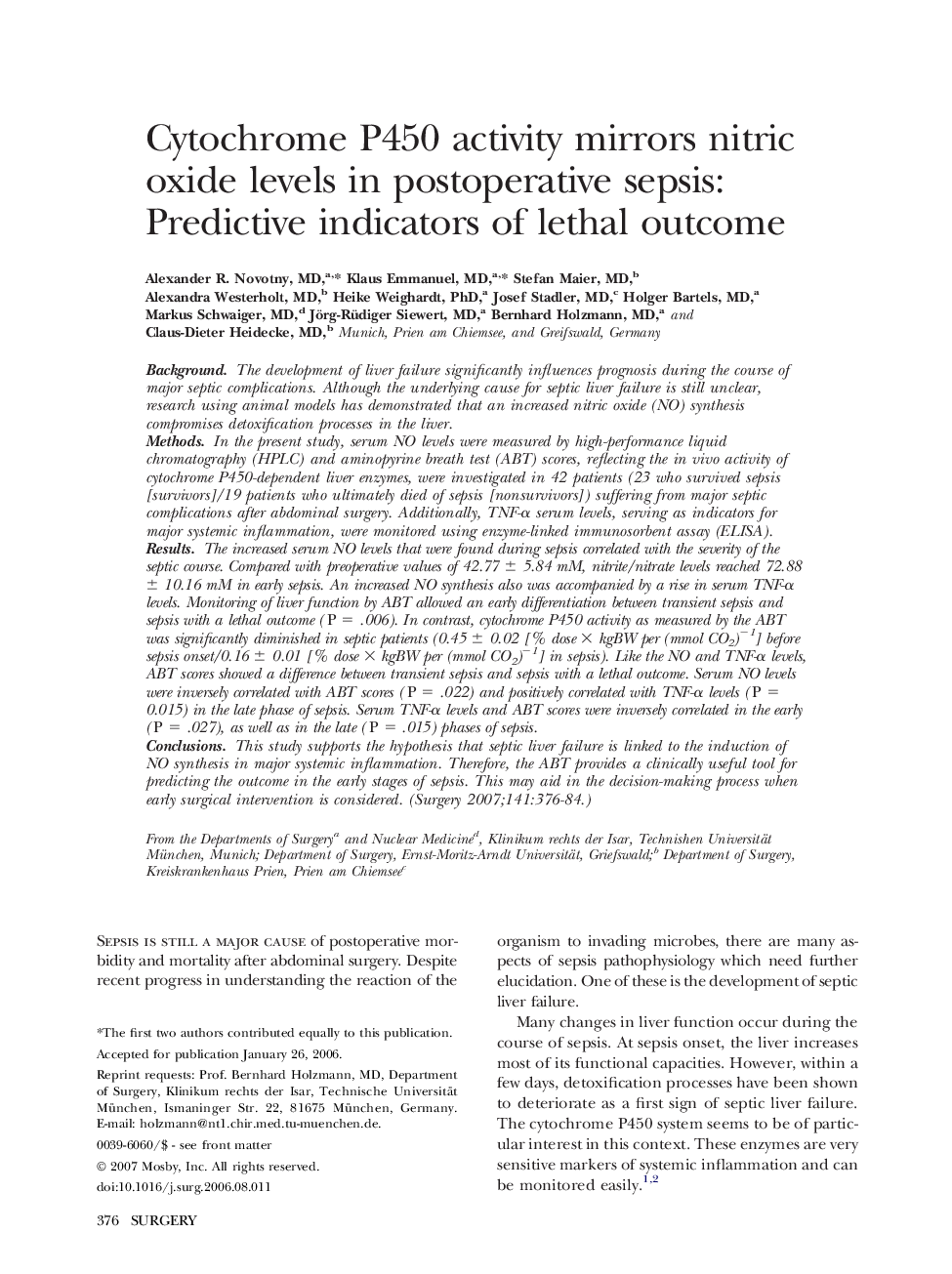| Article ID | Journal | Published Year | Pages | File Type |
|---|---|---|---|---|
| 4310435 | Surgery | 2007 | 9 Pages |
BackgroundThe development of liver failure significantly influences prognosis during the course of major septic complications. Although the underlying cause for septic liver failure is still unclear, research using animal models has demonstrated that an increased nitric oxide (NO) synthesis compromises detoxification processes in the liver.MethodsIn the present study, serum NO levels were measured by high-performance liquid chromatography (HPLC) and aminopyrine breath test (ABT) scores, reflecting the in vivo activity of cytochrome P450-dependent liver enzymes, were investigated in 42 patients (23 who survived sepsis [survivors]/19 patients who ultimately died of sepsis [nonsurvivors]) suffering from major septic complications after abdominal surgery. Additionally, TNF-α serum levels, serving as indicators for major systemic inflammation, were monitored using enzyme-linked immunosorbent assay (ELISA).ResultsThe increased serum NO levels that were found during sepsis correlated with the severity of the septic course. Compared with preoperative values of 42.77 ± 5.84 mM, nitrite/nitrate levels reached 72.88 ± 10.16 mM in early sepsis. An increased NO synthesis also was accompanied by a rise in serum TNF-α levels. Monitoring of liver function by ABT allowed an early differentiation between transient sepsis and sepsis with a lethal outcome (P = .006). In contrast, cytochrome P450 activity as measured by the ABT was significantly diminished in septic patients (0.45 ± 0.02 [% dose × kgBW per (mmol CO2)−1] before sepsis onset/0.16 ± 0.01 [% dose × kgBW per (mmol CO2)−1] in sepsis). Like the NO and TNF-α levels, ABT scores showed a difference between transient sepsis and sepsis with a lethal outcome. Serum NO levels were inversely correlated with ABT scores (P = .022) and positively correlated with TNF-α levels (P = 0.015) in the late phase of sepsis. Serum TNF-α levels and ABT scores were inversely correlated in the early (P = .027), as well as in the late (P = .015) phases of sepsis.ConclusionsThis study supports the hypothesis that septic liver failure is linked to the induction of NO synthesis in major systemic inflammation. Therefore, the ABT provides a clinically useful tool for predicting the outcome in the early stages of sepsis. This may aid in the decision-making process when early surgical intervention is considered.
